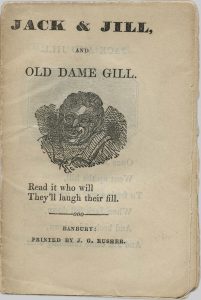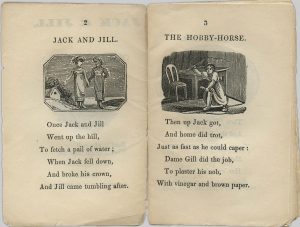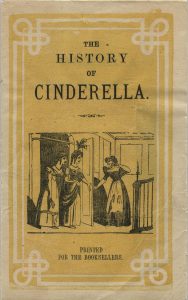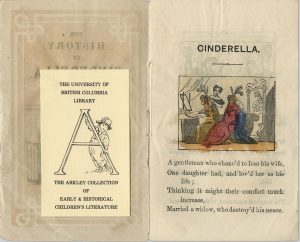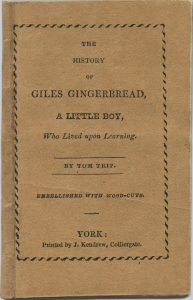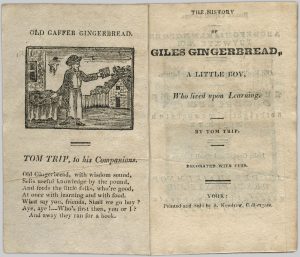The Historical Children’s Literature Collection contains eighty-five works of children’s literature spanning from the late 18th to late 19th Centuries. The collection is a collaboration between UBC’s School of Information, Department of English Language & Literatures, Rare Books and Special Collections (RBSC) and Digitization Centre. The physical materials are from both RBSC’s historic children’s literature holdings as well as the Arkley Collection of Early Historical Children’s Literature.
Many of the stories featured in this blog post are variations of classics that you will likely recognize as stories from your own childhood. Others are less well known and may be tales you’ve never heard before!
UBC’s collection contains many chapbooks and early Canadian children’s literature materials. The books featured in this blogpost are all chapbooks, which McGill Rare Books states are “small, unbound, paper-covered books that were carried and sold by itinerant peddlers known as ‘chapmen’”.
I hope you enjoy perusing these historic children’s stories!
Jack and Jill, and Old Dame Gill:
This chapbook of “Jack and Jill, and Old Dame Gill” is thought to be from 1820. There is a pattern in the poetic meter (the number of syllables in each line), with the poem generally following a four-four-seven structure.
This chapbook of “The History of Cinderella” is from 1840. The story is a narrative poem written in iambic pentameter, and rhymed in heroic couplets.
The History of Giles Gingerbread, A Little Boy, Who Lived Upon Learning
Children’s literature often contains strong moral messaging in an effort to teach young children about societal values. As these values and morals change through time and differ between cultures and geographic regions, readers can discern which values were commonly bestowed upon children during any given time period.
Giles Gingerbread is a great example of this as it is a moral tale thought to be from around two-hundred years ago (1820). The story highlights the importance of honesty, charity, goodwill, and hard work and follows the classic ‘American dream’ formula of inspiring upward class mobility, particularly through learning to read and write.
One interesting observation that can be made from the chapbooks featured in this blog post is the difference in how class mobility opportunities are presented to male and female characters in these tales. Cinderella is an example of a young girl who is beautiful, obedient and kind and through these traits she achieves upward class mobility by marrying a rich prince. In contrast, the male child in Giles Gingerbread is encouraged to learn to read and write in order to become wealthy. Of course, this observation is not a new one, it is an obvious and well documented trend in children’s literature, and one that unfortunately persists into contemporary children’s media. Although there is certainly progress being made!
That’s all for this week’s blog post, I hope you enjoyed reminiscing on some childhood stories and exercising some very light critical analysis.
Thank you for reading!
